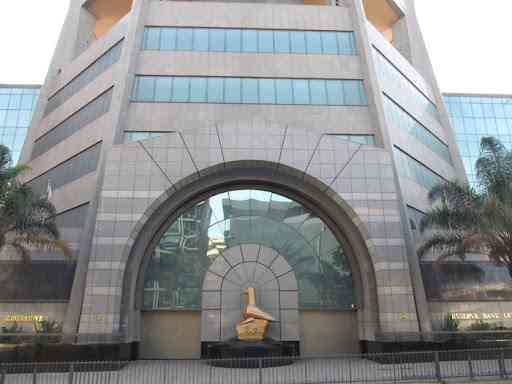
ZIMBABWE’S central bank has laid out an ambitious roadmap for its new gold-backed currency, the Zimbabwe Gold (ZiG), aiming for it to become the sole medium of exchange by the end of 2030.
This latest attempt to de-dollarise the economy faces a formidable challenge: overcoming a tumultuous history marked by hyperinflation and five previous failed currency regimes.
Introduced in April last year, the ZiG is touted by authorities as a stable alternative to the dominant United States dollar (USD).
To achieve its mono-currency ambition by 2030, the Reserve Bank of Zimbabwe (RBZ) has set crucial benchmarks: building foreign reserves to cover three to six months of imports, reducing annual inflation from a staggering 94% to single digits by next year, and narrowing the exchange rate premium between official and parallel markets to less than 30%.
Failed currency regimes
Zimbabwe’s currency saga is a cautionary tale in monetary policy, defined by a recurring cycle of introduced currencies, rapid depreciation and eventual abandonment. Understanding these past failures is critical to assessing the ZiG’s potential.
Zimbabwe’s economic narrative is tragically intertwined with currency instability. Past efforts, including the infamous Zimbabwean dollar, which suffered hyperinflation reaching billions of percent in 2008, inflation reached an astronomical estimated 500 billion percent, rendering the it worthless.
Prices would double within hours, forcing citizens to carry wheelbarrows of cash to purchase basic goods. This era taught a painful lesson: a currency unsupported by economic fundamentals, fiscal discipline and public trust is doomed to fail, regardless of its backing or initial design.
- RBZ blocks Harare US dollar charges
- Industry cries foul over new export surrender requirements
- One stitch in time saves nine
- Banks keep NPLs in safe territory
Keep Reading
Subsequent re-introductions, invariably collapsed due to a critical lack of public trust, insufficient foreign currency reserves and often, uncontrolled money supply growth to finance government deficits.
The Adoption of multi-currency (dollarisation) was a necessary evil in 2009, faced with the complete collapse of the Zimdollar, Zimbabwe officially abandoned its local currency and adopted a multi-currency system, effectively dollarising the economy.
This move immediately brought stability, curbed hyperinflation and restored a semblance of economic predictability. Businesses could plan and citizens could save without fear of their money evaporating overnight.
However, dollarisation also presented significant disadvantages. The country lost control over its monetary policy, effectively outsourcing it to the United States Federal Reserve. This meant the RBZ could not devalue the currency to boost exports or stimulate domestic production.
It also led to recurrent liquidity crises, as the supply of US dollars was constrained by limited exports and foreign investment, making it difficult for the economy to grow and for the government to manage its finances. While offering stability, it highlighted the long-term strategic benefits of having a sovereign, stable currency.
The period following dollarisation saw several attempts to reintroduce a local currency or currency proxies, all of which met with swift failure:
Bond notes (2016): Introduced at par with the US dollar, these notes were meant to ease liquidity shortages but quickly lost value on the parallel market due to a lack of genuine backing and widespread skepticism that they were a backdoor return to the ZWL.
RTGS dollar (2019): An attempt to formalise the electronic balances (Real-Time Gross Settlement) as a separate currency from the US dollar, followed by the introduction of new ZWL notes. This also swiftly depreciated, as fundamental economic issues such as foreign currency shortages and fiscal deficits persisted.
Various iterations of the ZWL (2019-2024): Each subsequent redenomination or re-introduction suffered the same fate, battling a deeply-entrenched lack of confidence, a thriving parallel market and the inability of the government to control its spending. Suggesting that a currency’s value is not merely a legal decree; it is a reflection of economic strength, trust in institutions, and credible policy.
Lessons from the past:
Trust is paramount: A currency’s value is fundamentally tied to public confidence in its stability and the issuing authority’s discipline. Zimbabwe’s historical pattern of printing money to cover spending eroded this trust, leading to a flight from the local unit.
Reserve backing is crucial: Attempts to peg or manage a local currency without adequate foreign exchange reserves are unsustainable. When a country lacks the reserves to defend its currency’s value, or facilitate vital imports, parallel markets flourish, and confidence evaporates. Governor John Mushayavanhu recently acknowledged that current foreign reserves cover only about one month of imports, a far cry from the target.
Fiscal discipline is non-negotiable: Hyperinflation in Zimbabwe was a direct consequence of chronic fiscal deficits financed by money creation. Without a strict commitment to balanced budgets and controlled government spending, any currency, regardless of its backing, is vulnerable.
Adoption challenges of mono-currency: When a foreign currency (such as the USD) becomes widely-adopted due to local currency failures, reverting to a mono-currency system is exceptionally difficult. People and businesses grow accustomed to the stability and ease of the foreign unit, making conversion mandates unpopular and potentially fueling black market activity.
The ZiG represents a departure from these unbacked paper currencies. Linking it to gold is intended to instill confidence, theoretically anchoring its value against a tangible asset. This strategy aims to avoid the pitfalls of past interventions where new currencies were essentially old problems rebranded.
The RBZ’s targets are laudable but extremely ambitious:
Building foreign reserves: Moving from one month to three-to-six months of import cover by 2030 requires a dramatic surge in exports, foreign direct investment, and remittances, coupled with strong fiscal management. This cannot be achieved through monetary policy alone; it demands structural economic reforms.
Reducing inflation to single digits: Halving 94% inflation to below 10% by next year is a monumental task that implies not only strict monetary policy but also addressing supply-side constraints, improving agricultural output, and maintaining stable energy prices.
Controlling exchange rate premium: The parallel market premium is a symptom of deeper issues — primarily a lack of foreign currency in official channels and a lack of trust in the local currency. Merely mandating conversions for domestic transactions without addressing these root causes will likely backfire, making the parallel market indispensable.
Under the proposed mono-currency system, individuals and businesses will be allowed to hold both local — and foreign-currency denominated accounts. However, a key tenet is that foreign currency must be converted into ZiG to conduct domestic transactions.
While lenders will continue to honour legitimate foreign-currency requirements such as imports, travel and expenses, this conversion mandate could face significant resistance if public and business confidence in the ZiG’s stability and convertibility remains low, potentially fuelling continued reliance on parallel markets for foreign exchange.
International bodies such as the International Monetary Fund (IMF) have expressed support for the ZiG's aspiration to become the sole currency, emphasising the need for robust policy implementation and structural reforms.
Meanwhile, local business lobby groups are urging the central bank to formalise and legally entrench its proclamations, recognising the importance of legal clarity for economic stability.
As Zimbabwe embarks on this latest monetary experiment, the success of the ZiG will be a litmus test for the nation’s ability to learn from its painful past.
It requires more than just a new name or gold backing; it demands a fundamental shift in economic governance, a restoration of trust and a sustained commitment to prudent financial management to truly break free from its recurring cycle of currency crises.
- Nyawo is a development practitioner, writer and public speaker. These weekly New Perspectives articles, published in the Zimbabwe Independent, are coordinated by Lovemore Kadenge, an independent consultant, managing consultant of Zawale Consultants (Pvt) Ltd, past president of the Zimbabwe Economics Society and past president of the Chartered Governance & Accountancy in Zimbabwe (CGI Zimbabwe). — [email protected] or mobile: +263 772 382 852.











